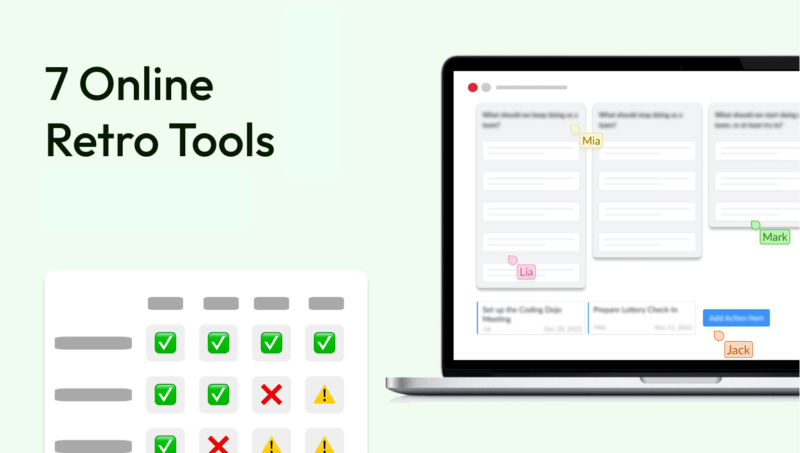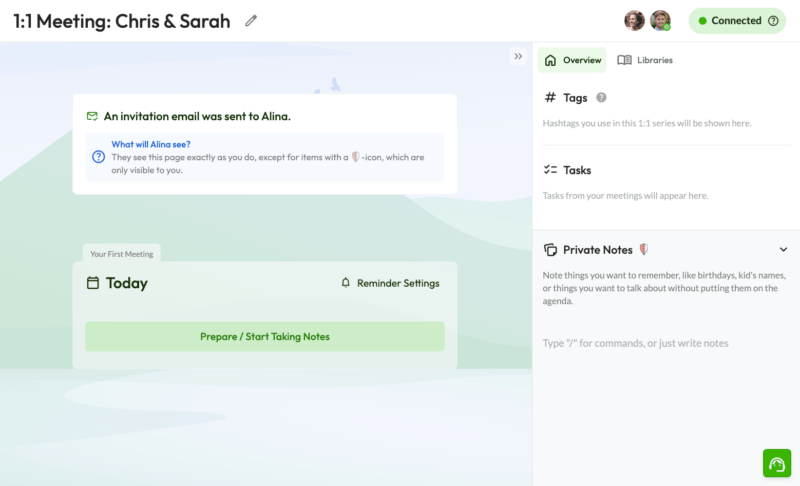Retrospectives are supposed to be entertaining and varied, but they should be one thing above all: Advancing teams, In this series of articles we share some tips on how to do that.
The goal is to give you practical tips on how to get your team excited about retros, to bring a breath of fresh air to the team dynamics and to rekindle the desire for retros.
First things first: Good retros need dedicated teams.
I, again and again.
1. Ask the question of meaning
"Start with why"
For retrospectives to really work, you need a dedicated team that sees added value for itself in the retro stores. If this fundamental question of meaning is not answered, it will always feel in stressful phases as if you were even stealing time from the team with the retros - not a good feeling.
So what's the point of your team retrospectives? And why is your time well invested in the retros? This question should be openly discussed in the team. Experience has shown that the following food for thought are suitable:
- What is our common team goal?
- What critical success factors can the team influence to achieve this goal? Or: If we fail as a team, why would that be? (see method Pre-Mortem)
The aim of these questions is to make the team members aware that the achievement of the team goal cannot be achieved through individual performance, but that there are interdependencies that require cooperation.
Wherever cooperation between several people or teams is necessary, there are various ways to design these interfaces of cooperation. Each design variant has both advantages and disadvantages / “predetermined breaking points”.
Example: If all teams record their todos in a common Kanban board, this has the advantage of a good overview of cross-team dependencies. At the same time, individual teams have less creative freedom with their Kanban boards: for example, columns and colors may then be specified centrally.
Sharpen the ax
Conflicts are therefore inevitable and, in case of doubt, cannot be prevented. That is why it is so important to create space in the retrospective for weighing up advantages and disadvantages and also for decisions regarding action items (and experiments) in a team.
In the end, it is about questioning the tools (in the broadest sense also the work environment) and adapting them to your needs in order to better achieve the team goals. In everyday life, you are often so focused on your contribution and tasks that it is difficult to identify these optimization potentials. This comic clearly illustrates this philosophy:
2. Commitment in the team
In the best case, answering the question of meaning has revealed some success factors and framework conditions that can only be meaningfully influenced or shaped by joint reflection in the team. The retrospectives give the team a space for reflection. At the same time, all team members should commit themselves to actively contribute.
Commitment through team decision
In general, it makes sense to make the decision about the introduction of retrospectives in a team and to determine the duration and frequency of the retrospectives together in the team. Regardless of whether you use it weekly, every 2 weeks or every 3 weeks - the most important thing is that all team members commit to keep this rhythm at least for a test period.
In the most agile sense, this rhythm should also be regularly questioned. Therefore, actively communicate the selected rhythm as "experiment to be checked". This will reduce defenses in the team and shows that emphasis is placed on active participation in the team.
Deal with objections
Important: There could be feedback like "Do we need retrospectives? Our team is too good for retrospectives". No. No team is too good for retrospectives! In this English language article are there some good answers to the classic doubts, like & #8222; do we need a retrospective in every sprint? & #8220; Etc.
Test Echometer now for free & enable varied retrospectives conveniently for all your teams!
3. Develop an agile mindset
Many teams had little contact with agile work and the feedback culture necessary for retrospectives. And even many teams that have been working “agile” for a long time are not necessarily familiar with the agile mindset - let alone live it.
While methods are relatively easy to adapt, it takes time for teams to adapt a new mindset and work successfully with it. That is why it should be part of the inventory, especially when introducing retrospectives, to reflect on the implementation of the agile values in the team and then to make them a topic in the retrospectively. You can find out more about agile values and how you can use them in ours Blog article on agile values.
Conclusion
We hope that these points provided valuable food for thought that will help you to introduce retrospectives in your team. What are your experiences with the introduction of agile retrospectives? What tips would you have wished for back then?
By the way: We can help you with the introduction of retrospectives: We have developed a tool especially for this - directly from the psychological faculty of the University of Münster. Below you will find Nicole's opinion of our tool.
And if you want, more information about our agile retro tool below that 🙂

Would you like support with the introduction of retrospectives? Or are you already a professional? No matter: Our tool can help you with both based on psychological findings. More information here:









